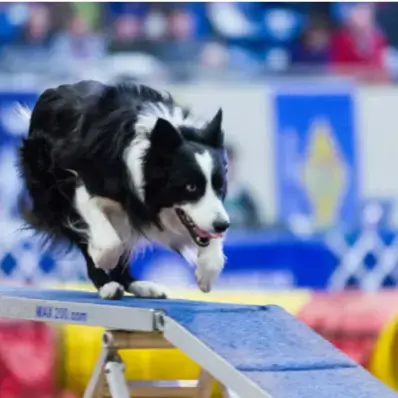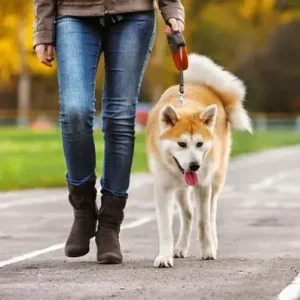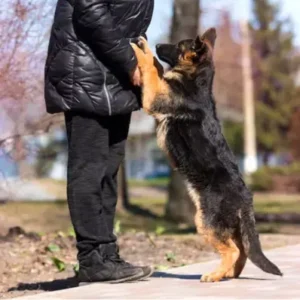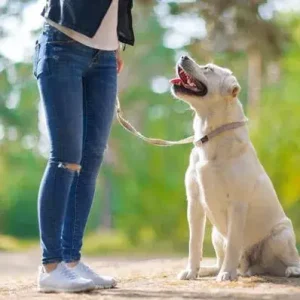What Breeds are Best for Agility Training?
While all dogs can participate in agility training, some breeds excel due to their natural athleticism and intelligence.
Here are a few top dog breeds:
- Border Collies: Known for their intelligence and high energy, they are top performers in agility competitions.
- Australian Shepherds thrive in structured training environments and are agile and eager to please.
- Jack Russell Terriers: Despite their small size, they are fast, energetic, and fearless.
- Golden Retrievers & Labradors: These breeds may not be as fast as others, but they are highly trainable and enthusiastic participants.
Basic Agility Equipment You Need
To begin dog agility training, you’ll need some basic equipment. Here’s a list of common obstacles:
- Jump Bars: Adjustable bars that your dog leaps over.
- Tunnels: Flexible tunnels for your dog to run through.
- Weave Poles: A series of upright poles that the dog must weave through.
- A-Frame: A large frame with two inclined ramps for climbing up and down.
- Pause Table: A platform where your dog must pause and stay for a few seconds.
How to Start Dog Agility Training at Home
Getting started with dog agility training may seem challenging at first. However, breaking it down into simple steps makes the process enjoyable for both you and your dog. By following these essential dog training tips, you can build a strong foundation for success in agility.
Here’s a guide to help you begin your agility journey at home:
Step 1: Build Basic Obedience Skills
Before starting agility, ensure your dog has mastered basic commands like “sit”, “stay”, “come”, and “leave it”. These commands are crucial for guiding your dog through the course safely.
Step 2: Introduce Obstacles Slowly
Start with one obstacle at a time. Allow your dog to explore it at their own pace and reward them with treats or praise for any effort.
Step 3: Use Positive Reinforcement
Agility training should always be a positive experience. Use treats, toys, and verbal praise to encourage your dog. Never punish or force them.
Step 4: Gradually Increase Difficulty
Once your dog is comfortable with individual obstacles, start combining them into short sequences. Gradually increase the complexity as your dog gains confidence.
Safety Tips
- Ensure the equipment is stable and safe.
- Avoid overtraining; keep sessions short and fun.
- Watch for signs of fatigue or stress in your dog.
Advanced Dog Agility Training Tips
Now that your dog has mastered the fundamentals of agility, it’s time to take their skills to the next level. Focus on advanced techniques to improve their speed, precision, and overall performance on the course.
- Focus on Speed and Accuracy: Once your dog understands the basics, work on improving their speed while maintaining accuracy.
- Practice Directional Commands: Teach commands like “left”, “right”, and “through” to guide your dog through complex courses.
- Train in Different Environments: Agility competitions often take place in unfamiliar settings. Practice in various locations to help your dog adapt.
- Stay Consistent: Use the same commands and hand signals during training to avoid confusing your dog.
Common Challenges and How to Overcome Them
Understanding these common hurdles and knowing how to address them will help you and your dog succeed in agility training.
- Fear of Obstacles: Some dogs may initially be afraid of certain obstacles. Be patient, use positive reinforcement, and never force your dog.
- Distraction Issues: If your dog gets easily distracted, practice in a quiet area first. Gradually introduce distractions as they improve.
- Lack of Focus: Keep training sessions short (10-15 minutes) to maintain your dog’s attention and enthusiasm.








